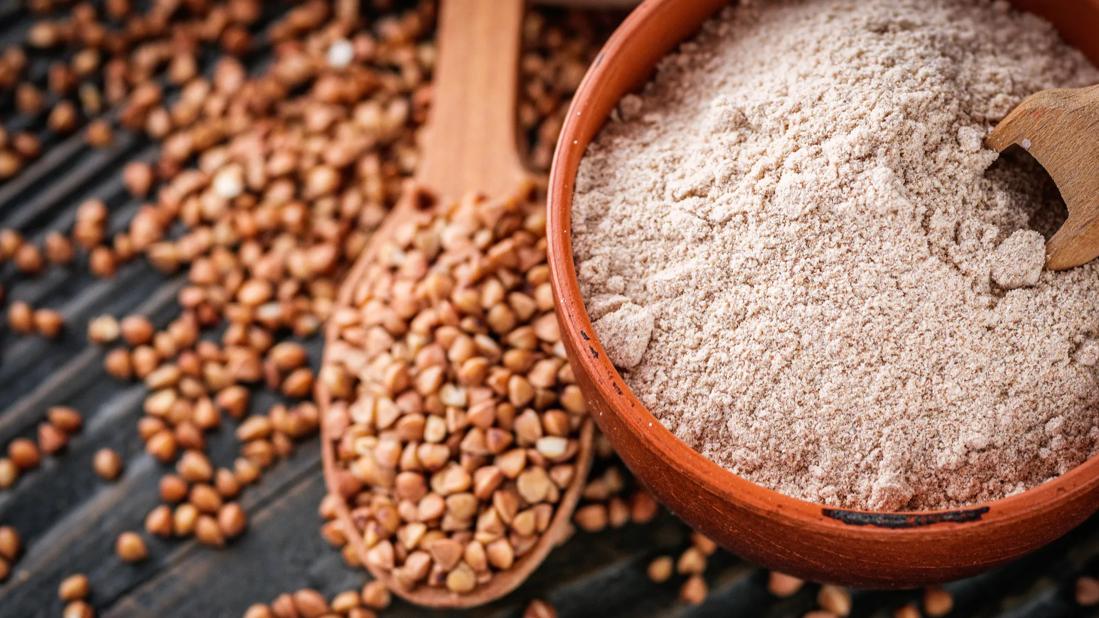The gluten-free, fiber-rich superfood supports gut and heart health and can help with diabetes management

Food names can be deceptive. For example, buckwheat isn’t a type of wheat at all. It’s actually a flowering plant in the same family as rhubarb.
Advertisement
Cleveland Clinic is a non-profit academic medical center. Advertising on our site helps support our mission. We do not endorse non-Cleveland Clinic products or services. Policy
“Buckwheat seeds contain complex carbohydrates, fiber, antioxidants, vitamins, minerals and plant protein,” says registered dietitian Natalie Crtalic-Lowther, RD, LD. “This combination of nutrients puts buckwheat in the superfood category. The health benefits range from improving digestion and diabetes management to protecting against heart disease.”
Buckwheat has been part of the human diet for thousands of years. “Although buckwheat has grain-like properties, it’s not a true grain. It’s classified as a pseudograin, or false grain,” explains Crtalic-Lowther.
Traditional grains, like wheat, oats and rice, are the seeds of grasses. Pseudograins, which also include quinoa and amaranth, are the seeds of other plants.
The main types of buckwheat food products are:
When it comes to whole grains, buckwheat is one of the best.
“And because it has no gluten, it’s a great way to get the nutrition you need even if you follow a gluten-free diet,” says Crtalic-Lowther.
Advertisement
One cup (about 170 grams) of cooked buckwheat groats contains:
It also provides these nutrients:
Buckwheat is rich in flavonoids, too. These plant-based compounds are known for their antioxidant, anti-inflammatory and anticancer properties.
Making buckwheat a part of your meals may translate to a variety of health benefits.
Buckwheat contains insoluble and soluble fiber, both of which help improve digestion:
By improving digestion and overall gut health, fiber may lower your risk of colon cancer. “Fiber also helps prevent other cancers,” says Crtalic-Lowther.
A large review of studies found a link between fiber intake and the risk of death due to cancer. Each 30 grams of whole grains eaten per day lowered the risk by about 7%.
According to research, whole grains and fiber can improve heart health due to their positive effects on cholesterol, blood pressure and weight management. That’s why experts recommend getting at least half of your total grains from whole grains.
Specific research on buckwheat and heart health is limited. One review looked at 15 clinical and 21 lab studies. The researchers concluded that buckwheat may reduce your risk of heart disease by lowering total cholesterol, triglycerides and blood sugar.
“We need more high-quality studies,” clarifies Crtalic-Lowther. “But what we already know about whole grains clearly supports making buckwheat a steady part of your diet.”
Type 2 diabetes affects your body’s ability to move sugar (glucose) from your bloodstream to your cells. Too much sugar in your blood can cause many health problems.
Compared with other grains, such as millet, bulgur wheat and couscous, buckwheat has a low glycemic index.
“Low glycemic index foods break down slowly in your gut and can help reduce spikes in blood sugar,” says Crtalic-Lowther.
Buckwheat may also help improve insulin sensitivity. For example, one study of people with Type 2 diabetes found reduced insulin levels in those who substituted a portion of their diet with buckwheat. Participants who only received dietary education didn’t show any improvements in insulin.
Obesity is a risk factor for many diseases. “With high levels of protein and fiber, buckwheat can help you feel full longer,” says Crtalic-Lowther. “As a result, you may consume fewer calories and have an easier time maintaining a healthy weight.”
Advertisement
Research also suggests buckwheat may aid in weight loss. In one study, investigators gave participants foods made from either buckwheat or wheat flour. After eight weeks, the buckwheat group had significantly more weight loss than the wheat flour group.
Buckwheat is a daily staple in many areas of the world. Although rare, some people are allergic to it. Symptoms of a buckwheat food allergy include:
Another concern with buckwheat is digestive distress from too much fiber. To avoid gas, cramps and changes in your bowel movements, add fiber to your diet slowly over the course of a few weeks — increasing about 5 grams of fiber a week, until you reach your goals.
To get started on your buckwheat journey, experiment with raw and toasted varieties, which have different flavors. And try different cooking methods to give you the texture you’re looking for.
Crtalic-Lowther recommends adding buckwheat to your salads, crepes, soups and breakfast bowls. The possibilities for creating flavorful dishes with an exceptional nutritional kick are endless.
“Raw, hulled buckwheat can be put into a food processor or blender, and the flour can be used to replace all-purpose flour in certain breads and baked goods,” she shares. “I like it in banana bread for more whole grains. Also, it can be used to replace all-purpose flour when making pancakes.”
Advertisement
Advertisement
Learn more about our editorial process.
Advertisement

Eating too much salt can put extra pressure on your blood vessels and heart

High in antioxidants and vitamin C, kohlrabi lowers disease risk, protects your heart and aids digestion

Wasabi root may protect against cancer, food poisoning and memory loss

Limes and lime juice are rich in vitamins, minerals, antioxidants and other nutrients

This herbal drink may ease allergies and boost prostate health

The common flavor enhancer has had a bad reputation — but here’s what the research shows

This ancient grain, packed with protein and fiber, can help with weight loss and heart health

From protecting against cellular damage to helping prevent kidney stones, lemons are as healthy as they are tangy

The ‘sunshine vitamin’ is found naturally in some fish and is added to other foods

Autism and ADHD often go hand in hand, giving rise to the term AuDHD

The Yuzpe regimen is less effective than other forms of emergency contraceptives, and it’s associated with more side effects